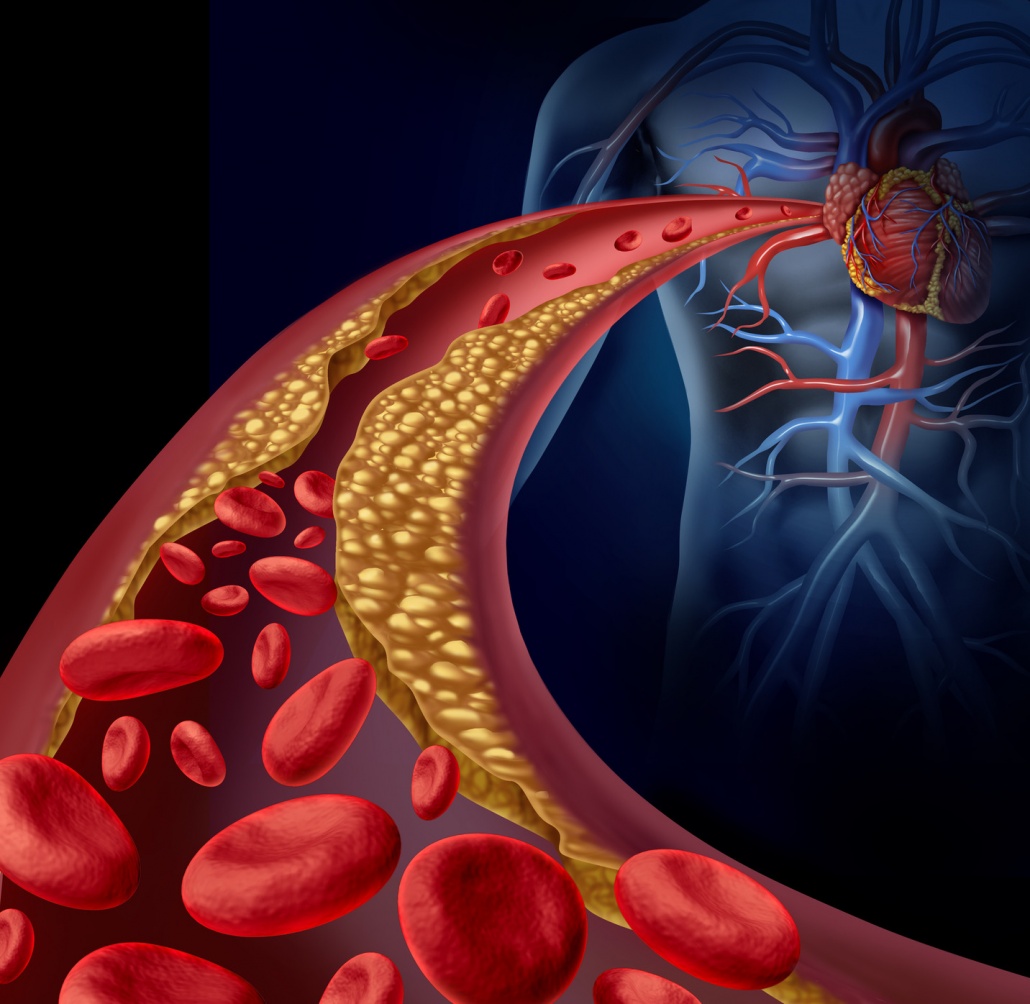Hardening of arteries (Atherosclerosis/Arteriosclerosis)
By Fasiha Hasham
Atherosclerosis or hardening of the arteries entails a loss of elasticity in the blood vessels that carry blood from the heart to all parts of the body.
Arteries throughout the body may be affected by hardening, resulting in symptoms from the diminished flow of blood to the area served by the affected vessels. For example, a hardening of arteries in the legs can cause pain and difficulty walking. Hardening of the coronary arteries, which encircle the heart and provide nourishment to the heart muscle, can cause chest pains and a heart attack. Narrowing or hardening of arteries to the brain can cause a stroke.
Blood vessels lose a certain amount of elasticity with aging. This process may be compounded by a buildup of fatty deposits in the blood vessel lining. This is referred to as atherosclerosis. These fatty deposits are made up mostly of cholesterol circulating in their blood have an increased incidence of atherosclerosis.
Exactly what initiate’s atherosclerosis is unknown, but the process is believed to begin early in life. Researchers think that a combination of genetic susceptibility, high cholesterol levels, and some sort of injury to the artery lining all are involved. Cigarette smoking can worsen the condition; some researchers think it may even be a cause.
Other diseases, especially high blood pressure, diabetes and obesity, also contribute to artery hardening from atherosclerosis.
Symptoms related to Arteriosclerosis are
- Angina, breathlessness, and other symptoms of coronary artery disease
- Leg ulcers, tingling, pain and difficulty walking.
- Memory loss and other signs of dementia
- Diminished kidney function.
Diagnosis is established by studies of the circulation. This may require angiography, which are special x-rays taken of the blood vessels after a dye is injected into the circulation. Sometimes a catheter is also inserted a blood vessel to detect areas of narrowing; this procedure is referred to as contrast arterial catheterization.
Treatment depends upon the site and degree of hardening. Life- style changes can halt or slow the process in its early stages. Specific measures include stopping smoking, controlling high blood pressure and diabetes, losing excess weight and exercising regularly.
Medication to lower blood cholesterol may be prescribed if diet and other conservative measures are inadequate.
Low dose aspirin usually half an aspirin or one baby aspirin a day may be prescribed to help prevent clots from forming in arteries clogged by fatty plaque.
In severe cases, surgery or angioplasty may be needed. The surgery entails either bypassing the blocked area with a grafted blood vessel, usually one taken from elsewhere in the body, or opening the vessel and surgically removing the fatty plaque. Angioplasty entails inserting a catheter with a balloon tip into the artery. When the catheter reaches a site of obstruction, the balloon is inflated to flatten the plaque and widen the opening through which blood flows.
PRECAUTIONS
The risk of hardening of the arteries can be reduced by:
- Achieving and then maintaining normal weight
- Controlling high blood pressure, diabetes and other disorder that may contribute to buildup of fatty plaque
- Consuming a diet low in saturated fats and cholesterol and high in starches and fiber
- Exercising for at least 15 to 20 minutes 3 to 4 times a week
- Not smoking
Hardening of the arteries is a long term, progressive process. Generally there are no symptoms until the hardening of the arteries is quite advanced. Even arteries that are 80 percent blocked can deliver adequate blood to maintain normal function.
The major danger occurs when a diseased blood vessel becomes completely blocked by a clot or fatty plaque. When this happen the blood supply is cut off and the tissue normally served by the blocked blood vessel dies. Depending upon the site involved, this can cause a heart attack, stroke or gangrene requiring amputation.
Editor’s Note: Dr. Fasiha Hasham obtained her medical degree from Sindh Medical College and completed a residency at Jinnah Post Graduate Medical Centre in Pakistan before moving to the United States. Her specialties include Internal Medicine and Gynecology and Obstetrics. She is married with four children and lives in Farmington Hills, Michigan. The views expressed here are her own.
















2015
2,830 views
views
0
comments